While it may seem to us that modifying the climate by means of technology is an entirely novel idea, it has actually been around for so long that Jules Verne wrote a book based on the premise as far back as the nineteenth century. The moral of that story, however, ran directly counter to the plan, which was thwarted. In fact, manipulating the weather has been the goal of a number of fictional villains, including the inevitable Simpsons parody in which the evil Mr. Burns pursues a plan to blot out the Sun.
All of this suggests that geoengineering or climate engineering—the intentional, large-scale intervention in the planet’s natural systems to counteract climate change—doesn’t get much good press. And yet desperate times call for desperate measures: in the face of the severity of the current climate emergency, numerous scientists are now considering or even experimenting on a small scale with various approaches in this direction.
There are two types of approaches: those aimed at regulating the solar radiation that reaches the Earth and those designed to sequester atmospheric carbon dioxide (CO2), which is the main agent of the greenhouse effect. But as fiction has already warned us, each of these approaches could upset delicate natural balances with consequences that are not always beneficial or even foreseeable. Therefore, it is important to analyse their feasibility and their pros and cons before implementing any of them in practice.
Stratospheric aerosols
One idea is to inject large quantities of suspended particles into the stratosphere, reflecting and scattering some of the incident solar radiation. Possible materials for these particles include sulphate aerosols, seawater microdroplets, alumina or diamond dust or calcium carbonate.
Sulphate aerosols have the advantage that they would replicate what happens in large volcanic eruptions that expel massive amounts of these particles, causing a significant drop in temperature in the months following the event. The most famous historical example of this natural phenomenon occurred with the eruption of the Tambora volcano in Indonesia, which caused the so-called “year without a summer” in 1816.
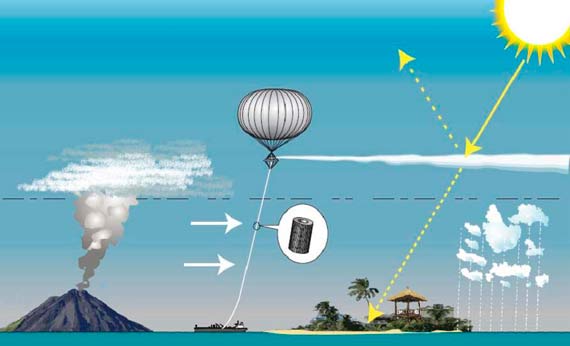
In support of this alternative is the fact that there is information and data on both the mechanism of action and the resulting effects thanks to the study of past volcanic events. It is also a reversible action in the medium term, given that the permanence of these aerosols is approximately one year. The main drawback is that these particles can alter global rainfall patterns and be converted in the stratosphere into sulphuric acid, which attacks the ozone layer.
To avoid these negative effects, Harvard University runs a project that replaces sulphates with calcium carbonate, an inert material. The Stratospheric Controlled Perturbation Experiment (SCoPEx) aims to use balloons to disperse these aerosols on a small scale as a proof of concept, in an area of the sky roughly 1 km long and 100 metres in diameter. But for years now, doubts about possible side-effects have been delaying the trials, which are being opposed by some groups and experts.
Solar reflectors
Mr. Burns’ idea to blot out the sun also has a real-life counterpart: a shield of space reflectors or mirrors blocking some of the Sun’s radiation before it reaches the planet could be another possibility to curb warming. In fact, the solar shield concept was first proposed in 1989 by James Early of the Lawrence Livermore National Laboratory. In general, the concept envisages placing the shield or shields—trillions of tiny discs in one of the projects—at the Lagrange equilibrium point 1 (L1), one of the five points of stable equilibrium in the gravitational system formed by the Sun and the Earth. Both the idea of this location and that of the solar shield have precedents in space probes. For example, the James Webb Space Telescope is located at the L2 point and has a shield to protect it from solar, terrestrial and lunar radiation.
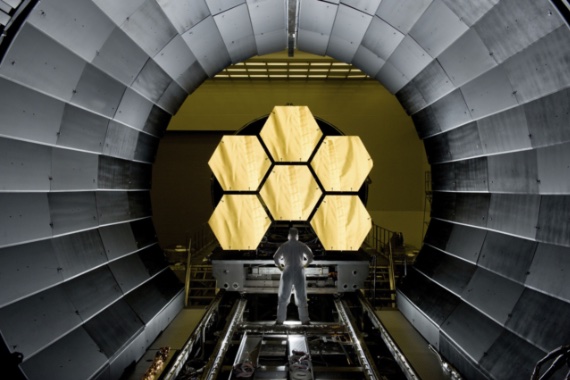
The great advantage of this futuristic proposal is that it would be reversible and immediately adjustable, as the deployment and arrangement of the shield would be controlled from Earth. The main drawback is related to the cost and development of the technology, but there are also serious uncertainties about how this alteration of sunlight could affect the biological cycles of living beings. However, in this case there is not even public opposition, as the chances of it becoming a reality are considered slim, although there is a foundation dedicated to promoting such a project.
Increase the terrertrial albedo
Albedo is the percentage of incident light radiation on a body or surface that is reflected. A completely black object would have an albedo of zero, while a white object would have an albedo of 1, or 100%. The Earth’s atmosphere has an average albedo of 30-35% due to clouds, although it varies greatly from region to region. Some climate geoengineering proposals suggest increasing the reflective capacity of clouds and the Earth’s surface so that more of the Sun’s radiation is returned to space rather than absorbed, which would reduce warming.
Clouds have a higher albedo the higher the density of suspended water droplets, so the aim would be to increase this density; one idea is to apply powerful jets of air to the ocean surface so that the droplets generated are incorporated into the cloud base, or to disperse seawater into the air using cannons similar to those used to make artificial snow. In Australia such a project has been launched to protect the Great Barrier Reef, an ecosystem that is extremely sensitive to warming water. In general, the idea is related to cloud seeding, which is used in various regions of the world for the purpose of regulating rainfall.
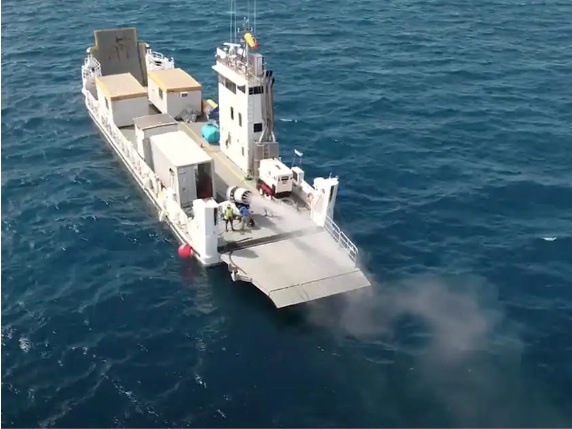
But it is not clear whether this action would be effective. On the other hand, it would be a short-term intervention with some positive aspects (minimal adverse effects, immediate results) as well as negative (cost, maintenance), as the effect would only last a few days before cloud dynamics provoked rainfall.
Other proposals to increase terrestrial reflection include covering desert areas with some reflective material, replacing crops with others having a higher natural albedo and painting the roofs of buildings and roads with reflective paints. The major advantage of increasing the albedo, apart from its relatively affordable cost, is that it would be reversible and also adjustable. The biggest drawback is that only a small percentage of the Earth’s land surface are deserts, towns or crops.
Sequestering of CO2 from the air
One proposal for the removal and underground storage of carbon dioxide would involve the installation of huge towers or devices that filter the air and trap CO2 within some form of resin or absorbent material. Once captured, the gas would be compressed at high pressures and then buried in deep geological repositories.
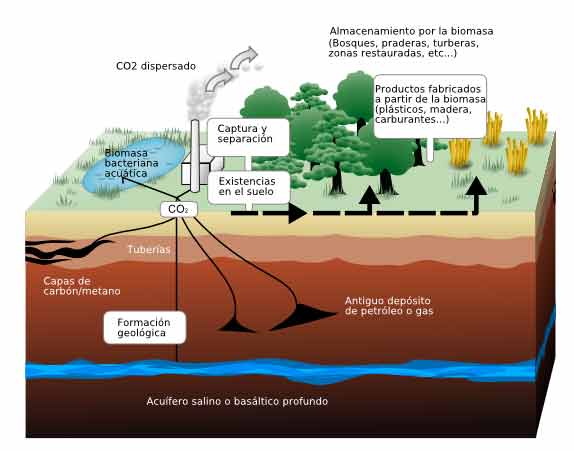
There are numerous proposals for the capture and storage of carbon, including pilot plants in several countries, which are already testing these technologies. The argument against this alternative is that this type of technology is very immature. In addition, the energy cost of the process would require consumption of fossil fuels that would produce more CO2 than could be removed. And above all, there is the question of whether this is really a solution or, on the contrary, merely burying a time bomb that could explode at any time. The risk is that at some point these deposits could collapse or leak due to seismic movements, cracks, overpressure or volcanic activity, releasing all this gas into the atmosphere at once, causing a sudden and brutal increase in the greenhouse effect. For all these reasons, there is strong disagreement among experts on the feasibility of these solutions.
Increasing mineral precipitation
This technique does not refer to rainfall, but to the deposition of mineral particles from the atmosphere. This process occurs naturally when tiny particles of the silicates that make up much of the Earth’s crust are carried by winds into the atmosphere, where they react with CO2 to form carbonates that precipitate onto land or into the oceans. Carbonates are part of living organisms, which, when they die, settle to the seabed and return these minerals to the Earth’s crust. In the Earth’s interior, magmatic processes transform these carbonates back into silicates, releasing carbon in the form of CO2 which volcanoes expel into the atmosphere. This geological cycle of carbonates and silicates is a master regulator of the Earth’s climate, and its balance has been largely responsible for our planet having been habitable for billions of years.
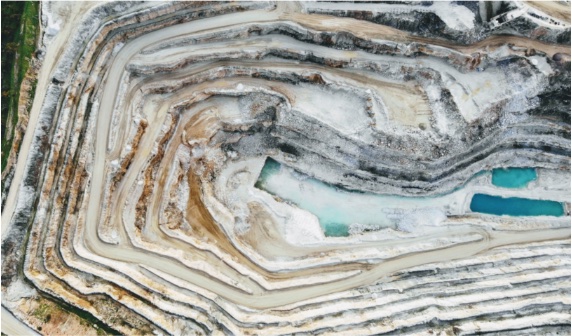
Scientists have raised the possibility of artificially forcing the cycle by increasing the reaction between silicates and CO2 to remove this gas from the atmosphere. This would involve extracting large quantities of silicates, such as basalt, pulverising it and spreading it, for example, on farmland. One study has calculated that doing so on all agricultural fields in China, India, the USA and Brazil would remove more than 2 billion tonnes of CO2 per year.
The great advantage of this method is that the mechanism and reactions involved are known and reproducible with simple and affordable technology. On the downside, it would require large-scale mining, which is one of the most polluting industries. Furthermore, it is not known how this massive input of carbonates would affect the long-term composition and state of the oceans and marine ecosystems.
Ocean fertilization
Half of terrestrial photosynthesis—a natural process that consumes CO2 from the atmosphere to produce oxygen—takes place in the oceans by phytoplankton and algae. Many marine regions are deficient in certain nutrients, which limits the growth of phytoplankton. Therefore, in the 1980s, the possibility of fertilising the oceans with nutrients such as iron to promote the growth of these organisms and thereby boost the removal of atmospheric CO2 was first raised.
Thirteen ocean fertilisation experiments have been conducted to date. Although the results have not been unfavourable, they have not been convincing enough for the scientific community to embrace this option. In addition to the questionable results, there is also potential collateral damage, such as excessive growth of algae harmful to ecosystems, the so-called red tides. This is one of the foreseeable effects, but acting on such a highly complex and sensitive ecosystem as the ocean without proper safeguards could have other harmful consequences.
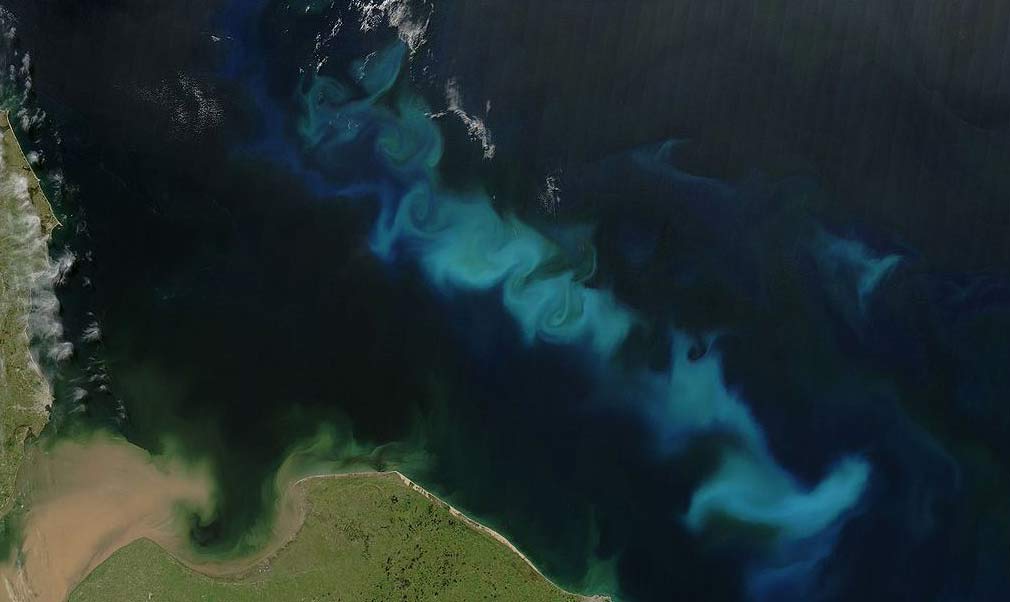
In conclusion, climate engineering is no stranger to controversy. A widespread fear is that approving such projects could distract from other essential duties, such as reducing greenhouse gas emissions from burning fossil fuels. Moreover, our knowledge of the complex mechanisms, systems and cycles that regulate the planet’s climate is too limited to be able to predict the long-term consequences of such large-scale operations. Ultimately, geoengineering remains a field to be explored, but from proof of concept to practical projects there is still a gulf that seems unbridgeable at the moment, and we are not sure if it will ever be wise to cross it.
Comments on this publication